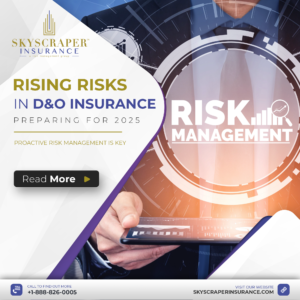The Russian attack on Ukraine has potential implications for the global insurance industry, and in some cases, for the U.S. insurance industry. In seeking just one word to explain these implications, that word would be “expensive.”
Already we have seen the negative financial impact worldwide from the stock market volatility, oil and commodity prices, merchant cargo and shipping costs, aviation interruptions, disruptions in the banking and investment sectors and loss of Russian imports/exports. Any country, state, territory or entity that does business with Russia will be affected financially, and in most aspects insurance coverage will not be a viable resource due to standard policy exclusions for war and military action, nuclear hazard, governmental action, and acts or decisions.
Inflationary risk
Inflationary risk has and will continue to escalate worldwide, due to the trickle-down effect of the negative financial impact. Even the state of Ohio has already seen inflationary increases due to the loss of Russian imports and exports, and this is likely to affect other states as well.
With huge jumps in imports from 2020-2021, Ohio had Russian imports of mineral fuel and oil of $22 million in 2021; fertilizers of $14.4 million; arms and ammunition of $10.7 million; and paper, paperboard and articles of paper pulp of nearly $1.9 million.
On the export side, Ohio exports to Russia reached nearly $220 million in 2021, including exports of $76.2 million in perfumery and cosmetics and $34.6 million in industrial machinery, including computers.
While these figures seem significant, Russia is number 24 on a list of importing nations to Ohio. Nam Vu, a Miami University professor of economics, in discussing the impact of Ohio with other states, sees the larger issue not being a disruption of Russia’s trading relationship, but rather the larger issue is the overall impact on inflation, “Because that can increase uncertainty, and that can price into a higher level of inflation — and that significantly will increase the recession risk, not only just for Ohio but for many other states as well.”
In reviewing recent AM Best publications on the matter, sanctions may have severe effects on oil and commodity prices, as well as tourism and the economies of less-resilient countries. It will be more challenging for the business operating environment in Russia and for firms conducting business in Russia with current sanctions, and additional sanctions being added that will complicate the situation even further. Sanctions on other financial institutions could lead to further complications or severely worsen the situation, according to Best’s Commentary.
“Further sanctions may impact the ability of international insurers and reinsurers to underwrite Russian risks or make it more difficult for them to service claims on existing policies,” said Anna Sheremeteva, financial analyst, AM Best. “Most affected would be those writing large energy and infrastructure risks, such as London Market insurers, and international reinsurers.”
Aviation insurers have lost premiums, with insurers having stopped coverage for air carriers in Ukraine in mid-February, and airlines are no longer flying in or out of Russia.
Shipping & cargo risk
Merchant ships in Ukraine have been hit, and insurers are either not offering coverage for vessels sailing the Black Sea or demanding huge premiums to do so. The Black Sea is a critical region for agricultural and oil traders, with Ukraine and Russia accounting for more than a quarter of the global trade in wheat and about one-fifth of corn. The Ukrainian ports have now been overtaken by Russia so any ships and cargo there are in jeopardy.
All of the disruptions and lack of cargo movement will only serve to further hamper the supply chain having already been impeded by Covid-19 related disruptions.
War risk
While war is not an insurable risk under traditional insurance, war risk insurance has actually been around since 1914, when the War Risk Insurance Act was passed by the United States Congress to ensure its availability for shipping vessels and individuals during WWI. In general, war risk insurance provides coverage on losses resulting from events such as war, invasions, insurrections, riots, strikes and terrorism. Details on War Risk Insurance can be found in Title 46 of the U.S. Code, Chapter 539. Many re-insurers submitted 48 hours notifications on cancellation of war risk insurance for Ukraine, beginning on Feb 11, 2022.
Political risk
Instability in a country can happen without warning, leaving investors, lenders and contractors unprepared and out of pocket. In the political upheaval, businesses may not be able to operate and their assets may be damaged, none of which would be covered by a standard insurance policy. Political risk insurance helps organizations conducting business around the world protect their assets and financial interests from monetary losses due to specified political risks.
These can be from such losses as being unable to convert currency, government interference and political violence including terrorism. Political risk insurance is designed to protect a business against arbitrary government actions such as confiscation, expropriation and nationalism; selective discrimination; forced divestiture; license cancellation and breach of contract.
It can also include coverage for loss or damage to physical assets as a result of violence, abandonment of assets or abandonment of the foreign operations as a result of political violence.
Further, political risk insurance covers the exposures of importers or exporters in differing scenarios, such as ceasing operations where exports are crucial to the business; or loss of products that only have value if exported.
As has happened with the banking and investment restrictions, political risk can respond when restrictions on foreign exchange prevents remittances relating to dividends, shareholder loan payments, inter company payables, and sale proceeds. Some coverage may be available to project lenders to protect investors against the failure of sovereign governments to meet their debt obligations due to political violence. Political risk insurance for contractors may provide coverage to construction, engineering, and other contracting firms against associated losses due to political upheaval or government action.




